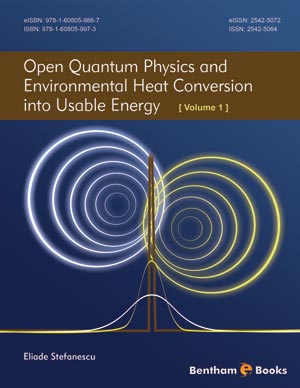Abstract
In this chapter, we apply the theory developed in chapter 7 to a superradiant semiconductor device for the conversion of the environmental heat into coherent electromagnetic energy. The operation principle of the device is formulated in simple terms, as a superradiant flow mainly supplied by heat absorption, only a much smaller part of the energy necessary for producing this flow being supplied from outside. This mechanism seems to counter the second principle of thermodynamics, but in fact does not, because this principle refers to an atomic system, describable by the Pauli master equation, as we showed in subsection 3.2.1. Any modification of this equation, as is our case of interaction with an electromagnetic field, involves a modification of the entropy dynamics. We calculate the wave-function, the corresponding dipole moments, and the dissipation coefficients, and obtain the superradiant power in the mean field approximation. When the field propagation, coupled to the crystal optical vibration, is taken into account, we get a resonance frequency shift with the Raman frequency, and a small decrease of the superradiant power by Raman effect.
Keywords: Coherence, superradiance, conduction band, forbidden band, valence band, deep level, junction, donor, acceptor, transistor, emitter, base, collector, internal field, doping impurity cluster, Poynting vector, Rabi frequency, saturation field, optical phonon, Raman effect.













